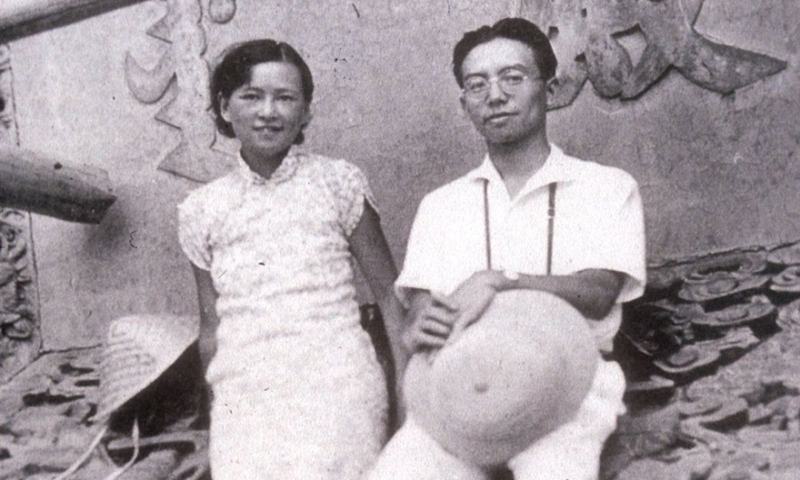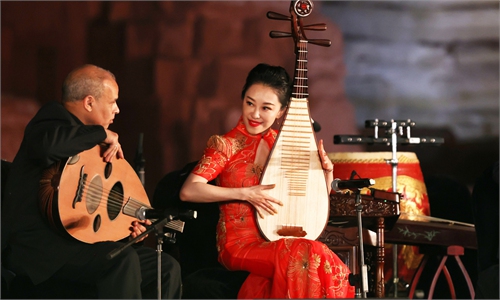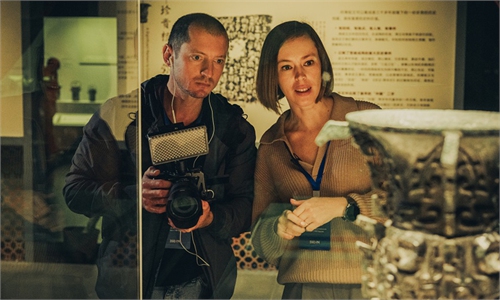ARTS / CULTURE & LEISURE
Chinese pioneer architect to receive long overdue diploma from Penn

Lin Huiyin and her husband Liang Sicheng in Beijing in 1936. Photo: Courtesy of University of Pennsylvania
China's pioneer female architect Lin Huiyin will be awarded a posthumous architecture diploma from the University of Pennsylvania (Penn) in 2024, with analysts saying it's a sincere move that shows the continued cultural and educational exchanges between China and the US.
Lin, the only woman among the first generation of Chinese architecture students at Penn between 1918 and 1941, will be awarded her long overdue Bachelor of Architecture degree by the Stuart Weitzman School of Design of Penn on May 18, 2024, according to a report by the Penn Wharton China Center (PWCC) on Monday.
The move came on the occasion of 120th birth anniversary of Lin and 100th anniversary of Lin's enrollment in Penn.
Lin came to Penn in 1924 and joined the Bachelor of Fine Arts course as her only choice because the architecture program didn't accept female students until 1934. However she finished the majority of the classes needed for the Bachelor of Architecture degree. She also served as a teaching assistant in architectural design, frequently surpassing her male counterparts, according to PWCC.
Of the 23 Chinese students in Penn's architecture program, Lin was the only one not awarded a diploma after completing her coursework.
"From the records, it was clear she wanted to be an architecture student and architect, and she was a very successful one at that. We looked into it more and more it was clear the reason she wasn't given a degree was because she was a woman," says Weitzman Dean and Paley Professor Fritz Steiner, who initiated a formal review in 2022.
"It's not right and this is an opportunity to correct that."
Shen Dingli, a professor from Fudan University's Institute of International Studies, told the Global Times that the move shows the US university's respect and love for an outstanding Chinese woman.
"It's an acknowledgment of Lin's accomplishments in art and architecture. The diploma is overdue but it's a positive move," said Shen.
Another analyst said it signals the continued cultural and educational exchanges between China and the US.
"A hundred years later, my mother was recognized by her alma mater. It reminded me of her bravery and determination when she chose architecture. She used her life to prove that she was a true architect," Liang Zaibing, 94, daughter of Lin, said.
The news soon became a trending topic on the Chinese X-like platform Sina Weibo. "Lin's accomplishments cannot be measured by an overdue diploma," posted one Sina Weibo user.
"A century overdue… but it doesn't take the gloss off Chinese architecture pioneer Lin," said another user.
Lin contributed to the design of China's national emblem and Monument to the People's Heroes, which was built at Tian'anmen Square to commemorate the revolutionary martyrs in modern Chinese history.
An exhibition named Building in China: A Century of Dialogues on Modern Architecture is currently on display at the PWCC. The exhibition celebrates the legacy and impact of the Chinese architecture students who enrolled at Penn in the first half of the 20th century. This cohort of students, who were known as the first generation of modern Chinese architects, went on to establish the practices and schools of architecture that shaped China's rapidly developing cities and towns for decades.
One of the highlights of the exhibition is a 15-foot-long panel featuring the 23 students in Penn's architecture program between 1918 and 1941. Lin, who was referred to as the first and most famous female architect in modern China by Penn, is in the middle of the panel.
According to one of the exhibition curators Lin Zhongjie, an associate professor of city and regional planning at Weitzman, one of the goals of Building in China is to frame the intercultural dialogues between China and US over the past century. "Among the different generations of Chinese architects, we want to see what the present-day architects inherited from the previous generations," Lin Zhongjie said.



